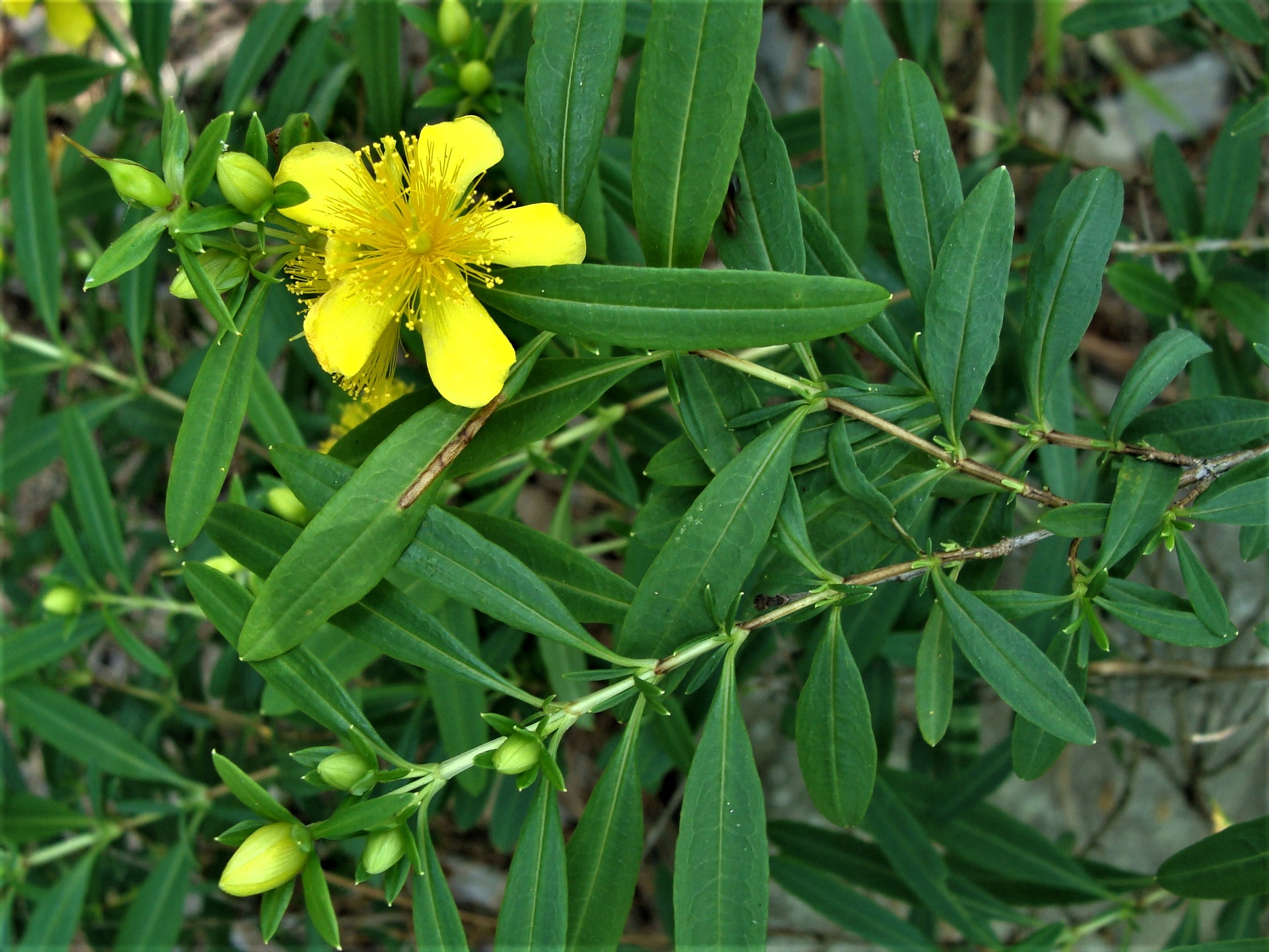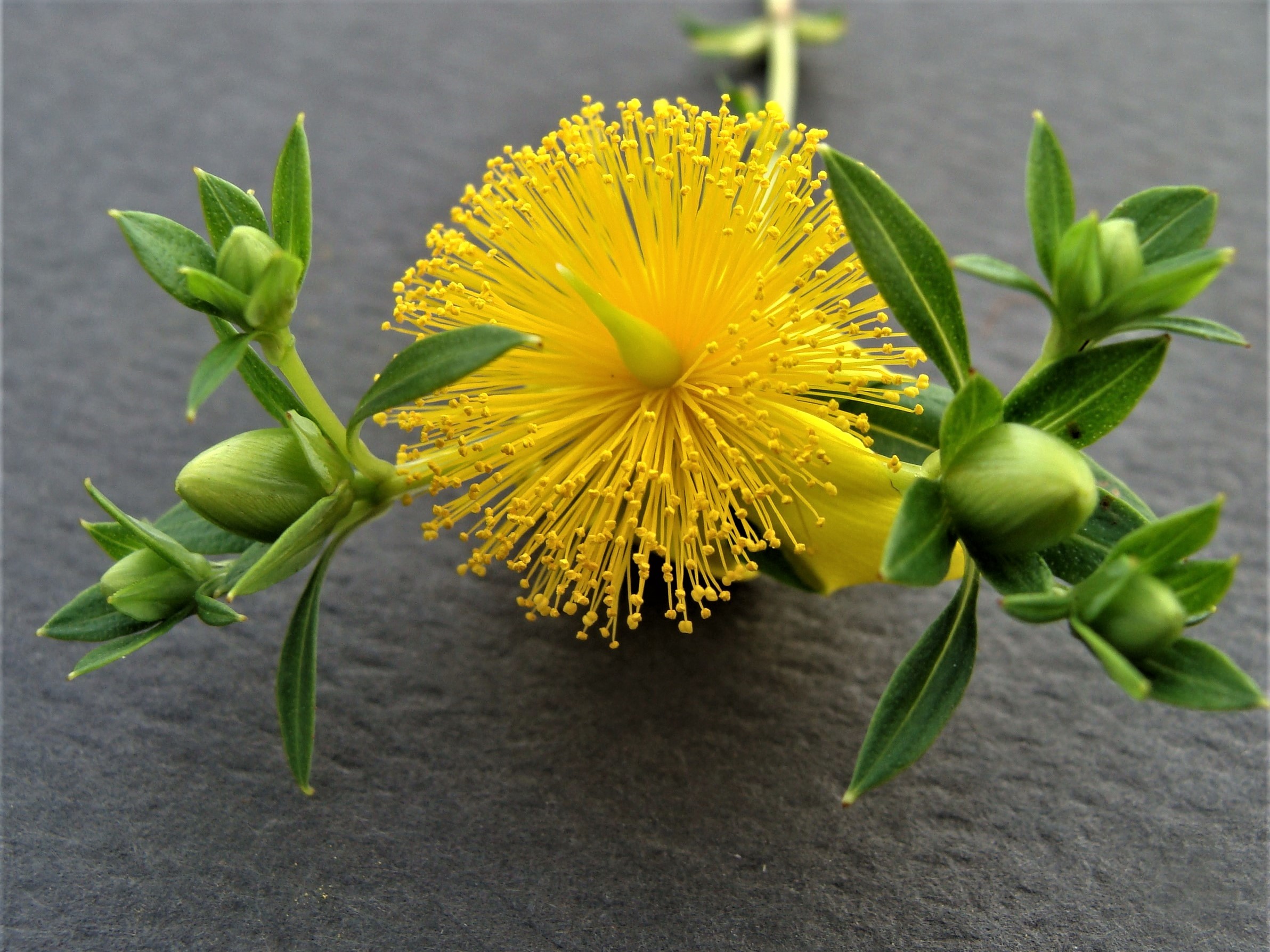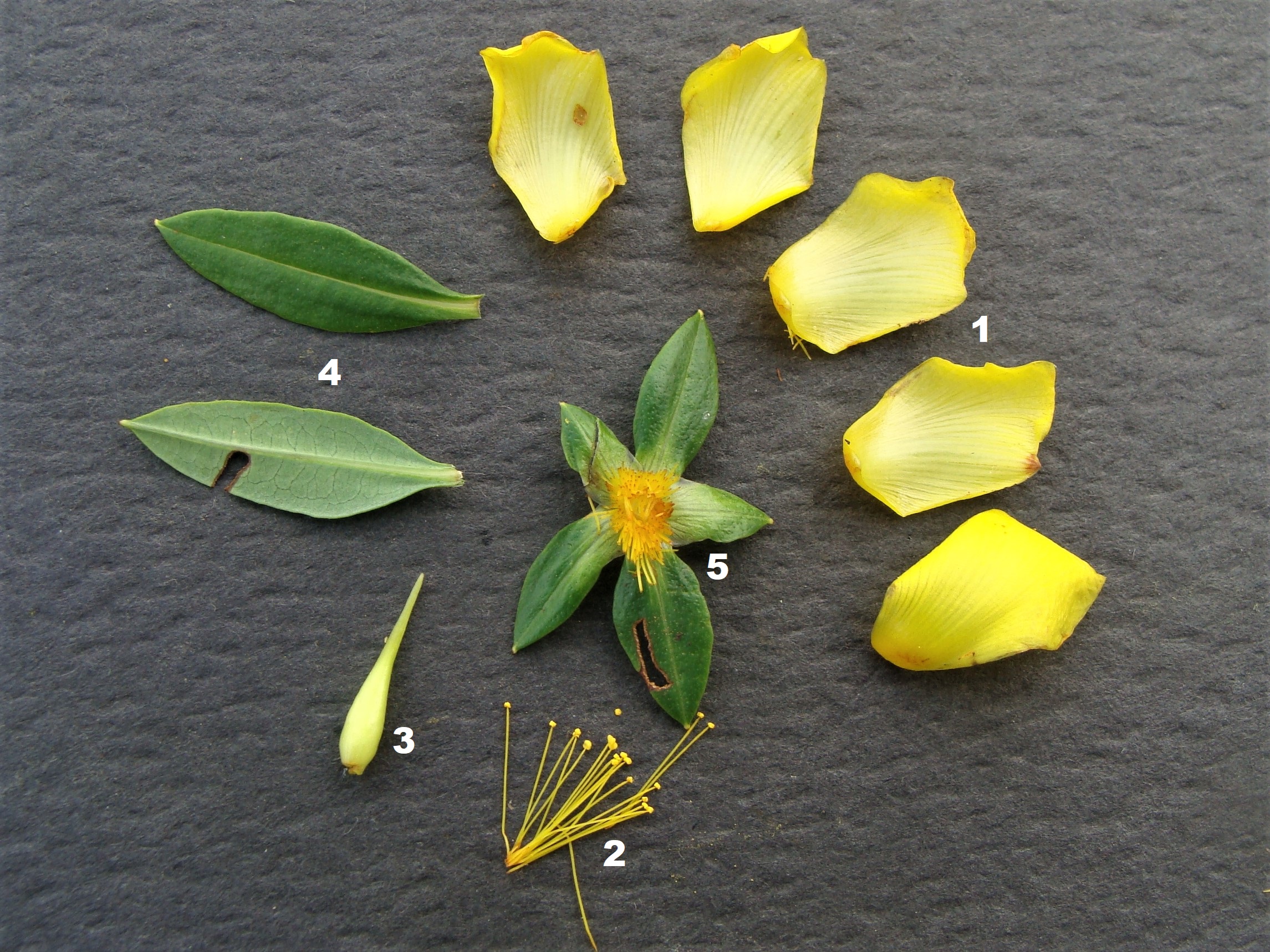Shrubby St. John’s-wort (Hypericum prolificum) of the St. John’s-wort (Hypericaceae) family is a short-lived, deciduous shrub with spectacular bright yellow flowers. The genus name originates from Greek words for “above” and “picture,” from the practice of placing flowers above a wall-mounted picture to discourage evil spirits on St. John’s feast day. The specific epithet, meaning “many,” is perhaps a reference to the plant’s numerous stamens. The species occurs from eastern Texas to Minnesota, thence east to the Atlantic and Gulf Coasts, although rarely encountered along the outer coastal plains. In Arkansas, it occurs throughout most of the state, except for low-lying areas of the Mississippi Alluvial Plain and the West Gulf Coastal Plain. Habitats vary from partial to full sun in well drained dry to mesic soils of upland areas, from rocky outcrops to stream banks, fields, and woodlands.
Shrubby St. John’s-wort, to 4 feet tall and broad, has one to several ascending branches which divide repeatedly into a myriad of twigs. Shrubs are dense and rounded on sunnier sites but more open in partial shade. Older trunks and branches bear loose, papery bark that exfoliates to expose underlying smooth reddish to orangish-brown bark.


Twigs become brown and woody during their first year of growth. They bear evenly spaced pairs of subsessile, opposite leaves. Low ridges extending between leaf nodes become indistinct in the second year of twig growth, due to bark exfoliation. Twigs may grow 6 to 12 inches or more per year, with greater growth on young plants and sterile shoots.
Leaves are linear-oblong with a cuneate (wedge-shaped) base and a mucronulate (short-tipped) apex, ranging from tiny to 2+ inches long and ⅜ inch broad. Surfaces are glabrous (without pubescence), shiny dark green above, dull medium green beneath. Margins are entire (without teeth), slightly wavy and revolute (rolled under). Axillary buds of the primary leaves (below flower-bearing portion of twigs) produce clusters of tiny secondary leaves.

Showy, yellow flowers bloom in early summer. They occur singly and in groups of three at and near the stem tips, typically a terminal flower and a pair of lateral, axillary flowers. Individual flowers (to 1 inch wide and ¾ inch high) remain at anthesis for one day, but with many clusters, shrubs may bear flowers for three weeks.

Smooth shiny flower buds mature from a pale green to yellow. With anthesis, five bright yellow petals (to ½ inch long and ¼ inch wide) reflex back onto the smaller sepals to expose a large, circular mass of closely spaced, golden yellow stamens. Straight, slender yellow filaments are tipped with round, golden yellow anthers. The androecium (stamens as a unit) encircles a prominent cone-like pistil, the ovary of which tapers to three stigmas formed by three united styles. As flowers fade, petals become golden brown before dropping off.


As pistils mature in late fall, their apexes and sides split and the ovaries become rusty brown capsules with three sharp points (styles). Black, flattened, oblong seeds are released as the flower-bearing portion of twigs dies.
In a garden or natural setting, shrubby St. John’s-wort would be an asset either as a specimen plant or in a loose group. As it tends to be a prolific seeder (perhaps another possible source of the its specific epithet?), seedlings may need to be removed; on the other hand, seedlings do provide replacements for short-lived shrubs. Seedlings may produce flowers by the third year. Bees (especially native bumblebees) and other insects are attracted to flowers for their copious supply of pollen; flowers produce no nectar. Not favored by deer.
Including the marsh St. John’s-worts, sometimes treated in the separate genus Triadenum, nearly twenty species of Hypericum occur in Arkansas, most with yellow flowers. Shrubby St. John’s-wort can be distinguished by a combination of its woody habit, large (as compared to the other Arkansas species) five-petaled flowers, densely packed androecium, and rounded-in-cross-section capsule. The species most likely to be confused with shrubby St. John’s-wort is five-lobe St. John’s-wort (Hypericum lobocarpum). Also a woody shrub, five-lobe St. John’s-wort has slightly smaller, more densely arranged flowers and capsules that are five-lobed in cross-section (hence both its common and scientific names).
Article and photographs by ANPS member Sid Vogelpohl

